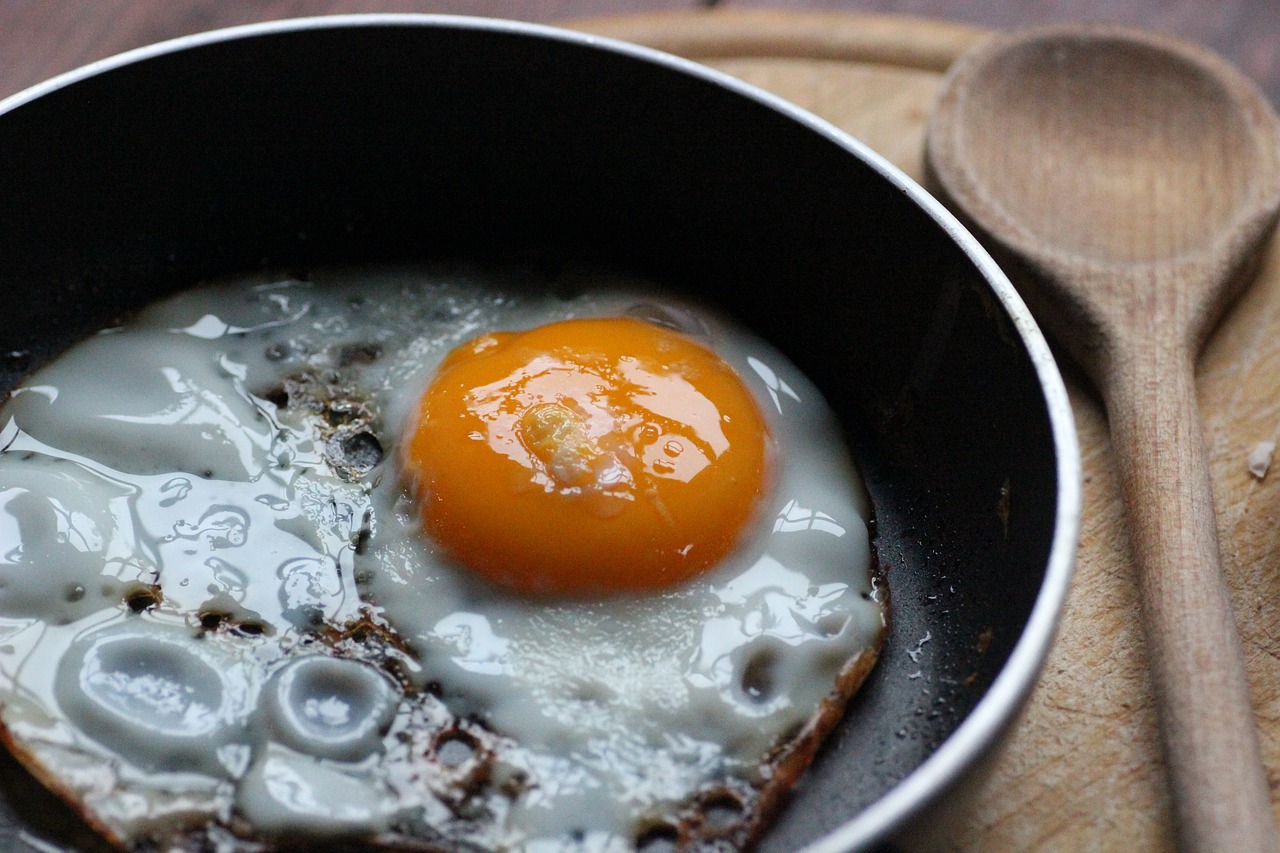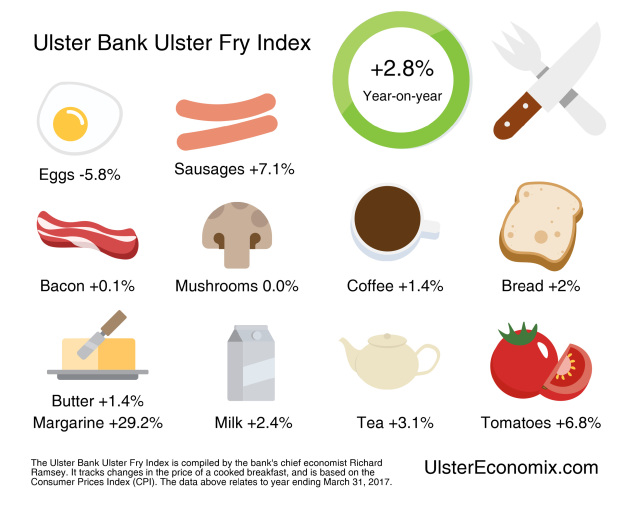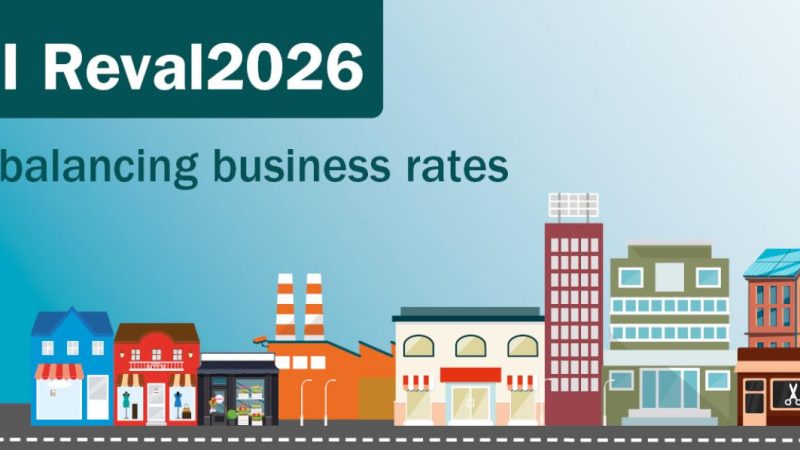Index based on Ulster fry, up

A unique retail index based on the cost of an Ulster fry in Northern Ireland has hit a three-year high, reversing a pattern of deflation.
Ulster Bank Ulster Fry Index takes a snapshot of local retail prices by assessing the cost of items commonly included in the indigenous cooked breakfast.
This year’s fry index shows the ingredients for NI’s favourite slap-up breakfast costs 2.8% than 12 months ago, according to Consumer Prices Index (CPI) figures, suggesting retail prices are on the rise.
The increase makes an Ulster fry the most expensive it has been in three years and reverses a previous pattern of falling prices, with the index falling 9% in 2016 and 3% in 2015.
Of the main items in an Ulster fry, pork sausages and tomatoes saw the biggest increases in price over the past year, rising 7.1% and 6.8% respectively.
 Margarine is up by a fat 29.2% over the year, with butter gaining just 1.4%.
Margarine is up by a fat 29.2% over the year, with butter gaining just 1.4%.
Eggs are the only item to have fallen in price, down 5.8%.
The Ulster Bank said the recent price increases are set to continue, while the Ulster Fry Index remains some 12% lower than it was in 2014.
Over the longer-term, however, the index is over 25% higher than it was ten years ago and 47% higher than in April 1998.
“Looking ahead, we only see the Ulster Fry Index going one way – up,” the Ulster Bank said. “Consumers are going to feel an increasing squeeze as the price of food rises in the months ahead. And of course cafes and restaurants also have to factor in rising energy and labour costs, for instance, in the prices they charge.
“The National Living Wage and the rising cost of gas and electricity will be key factors in their cost-base, and the prices they charge.”







